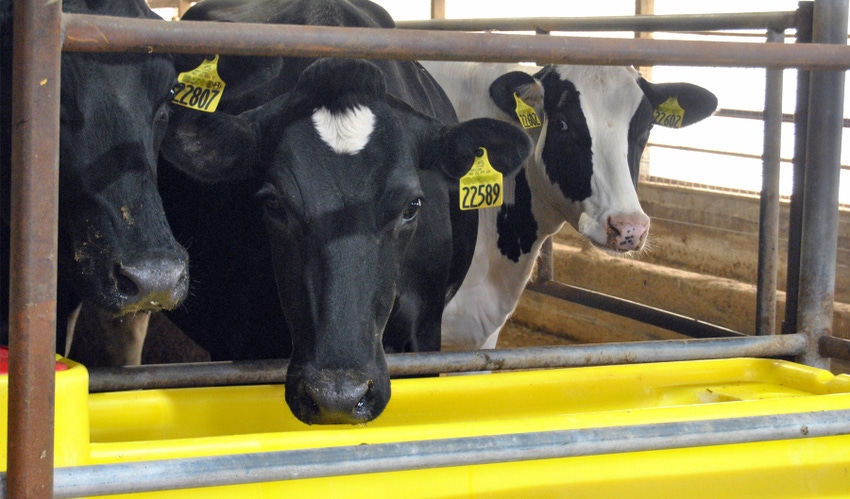
How do you know if summer heat is negatively impacting dairy cows?
According to Angie Ulness, University of Wisconsin Extension dairy educator in Manitowoc County, if you are starting to feel hot when you are outside, it’s likely already too hot for cows. If it’s 68 or higher on the temperature-humidity index, cows start feeling heat stress, which is often before humans begin feeling it.
“A temperature-humidity index of 68 equates to a 70-degree-F day with 65% humidity,” Ulness notes. “You may not be hot, but they are.”
Regardless of life stage of the animal, it is proven to be beneficial to provide heat abatement to all ages.
Provide shade
The first line of defense is limiting cows’ direct sun exposure with shade, Ulness says. “They also need ventilation, and they need plenty of water.”
A dairy cow’s rate of breathing increases when she is experiencing heat stress.
“When cows are lying down, they produce more heat,” Ulness explains. “When their respiration rate increases in an attempt to expel heat, that process decreases the amount of bicarbonate in the blood, decreasing the amount of available buffers in their rumen. Drooling helps cool their bodies.”
When cows are hot, they usually don’t eat enough, she says.
“When they do eat, they slug feed or sort feed, and that can lead to acidosis,” Ulness says. “A cow’s internal temperature peaks two hours after they are exposed to high heat, and it takes between four and six hours for them to cool off and get back to normal.”
According to Extension best management practices to help reduce heat stress in dairy cattle, farmers should monitor feed intake and adjust fiber levels to assure there is adequate fiber intake to boost energy and milk production. Another thing to consider adjusting is diet mineral content. With increased sweat and urination, additional sodium and potassium are needed. If increasing potassium, it is advised to also increase magnesium.
“Cows are drinking more water when it is hot,” Ulness says. “Add another water tank in the pen when it’s hot or as they are returning from the parlor. Cows will choose water over shade.” For cows on pasture, she says, it is important to offer an additional water source.
“The main thing is to make sure you are checking hoses, pumps and waterers to ensure water is available at all times,” she says. “In summer, cows’ water intake increases a lot. They stand more in the summer to stay cool, and often they are standing around the water, blocking some cows’ access to that water. Make sure the water is refilling at an optimal rate. Sometimes filter screens need to be cleaned, or you may need to add another pressure tank.”
Transport concerns
Use common sense when transporting cattle on a hot day in the summer. Consider placing fewer cattle in the trailer, and avoid hauling cattle between 11 a.m. and 4 p.m., which is the hottest time of the day, Ulness explains. Avoid stopping. If you have to stop, make sure you make the stop as short as possible.
Avoid giving vaccines during hot weather, or give them early in the morning or late in the evening when it is cooler, she notes. This allows the cattle to have their immune response to the vaccine under control before the temperature starts to rise.
Ulness says producers should have soakers or misters at the feed bunk, in the holding pen and in the parlor.
“They should deliver 1 gallon of spray in three minutes or less,” she says. “At the feed bunk, each nozzle should hit two or three cows at a time. That spray should be activated every 15 minutes, and as it gets hotter, it should activate every 10 minutes or less.”
When it is hot out, limit the number of cows in the holding pen. Consider bringing in only one-third to one-half of the pen instead of the whole pen. This is very farm specific.
“Maintain fan belts, and make sure they are clean and ready to go before it gets hot,” Ulness says. “Fans work better if they are not dusty. On a hot day, airflow and ventilation are important.”
About the Author(s)
You May Also Like






